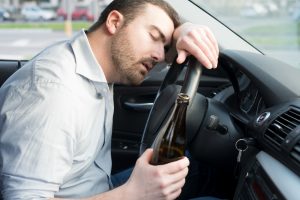
When a trooper’s DUI charge is dismissed, it may appear the trooper is getting special treatment. In the case of N.C. trooper Dennis Tafoya, the DUI charge was dismissed because the evidence didn’t prove he committed a crime. Although he may have been very intoxicated while sitting in his car, the car was not running. In North Carolina, that is not an offense. In Ohio, the law is different.
According to the news report about the trooper’s case, officers found him passed out in the driver’s seat of his vehicle, parked near the courthouse. The officers ordered him out of the vehicle and asked him if the vehicle was on. He said yes. The officers determined the trooper was intoxicated, arrested him, and charged him with DUI (called “OVI” in Ohio).
Footage from the officers’ body cameras showed the trooper’s vehicle was not running. One of the officers went to move the car and learned the keys were not in the ignition. It turned out the keys were in the trooper’s pants pocket the entire time: they were not in the ignition when the officers arrived. Once the officer got the ignition key from the arrested trooper, the officer found the trooper’s vehicle was in gear. The vehicle was apparently a stick shift, so, if it was in gear, it could not have been running.
In North Carolina, it is not a violation of the law to be intoxicated in a vehicle which is not running and not in motion. That state makes it illegal for a “driver” to be under the influence. The state law defines “driver” as a person in actual physical control of a vehicle which is in motion or has the engine running. The trooper’s vehicle was not in motion, and the engine was not running, so he did not commit the offense of DUI. Well…he may have committed it, but the officers could not prove it.
In Ohio, it can be a violation of the law to be under the influence in a vehicle which is not running or in motion. Ohio has a unique law: Physical Control Of A Vehicle Under The Influence. That law prohibits being in “physical control” of a vehicle while under the influence (or over the limit) of alcohol and/or drugs. The law defines “physical control” as being in the driver’s position of the front seat of a vehicle and having possession of the vehicle’s ignition key or other ignition device. The trooper in the news report would have been guilty of Physical Control in Ohio.
The difference between Physical Control and OVI in Ohio is operation. While Physical Control prohibits being in physical control of a vehicle under the influence, OVI prohibits operating a vehicle under the influence (O is for Operate). “Operate” means to move or cause movement of a vehicle.
Ohio’s Physical Control law, found in Ohio Revised Code section 4511.194, was enacted in 2004. Before that time, Ohio had a DUI law very similar to that of North Carolina. It seems the Ohio legislature’s rationale for the Physical Control law is we want to punish people for being under the influence in a vehicle but not driving, but we do not want to punish them to the same extent as those who do drive. Accordingly, Physical Control has penalties which are less severe than OVI. OVI is a moving violation resulting in six points on one’s driver license and a driver license suspension up to three years. Physical control is a non-moving violation resulting in no points on one’s driver license and a driver license suspension of up to one year.
The element of “operation” is not often in dispute in OVI cases, but it is something which should be verified by Ohio DUI / OVI lawyers and not just assumed. In the news report, the officers just assumed the vehicle was running. It is unclear why correcting the assumption required review of body camera footage. It seems like the officers would have realized this when they had to get the keys from the arrested trooper and the vehicle was in gear. Perhaps they were preoccupied with the irony of a drunk trooper parked near the courthouse.
 Columbus OVI/DUI Attorney Blog
Columbus OVI/DUI Attorney Blog

